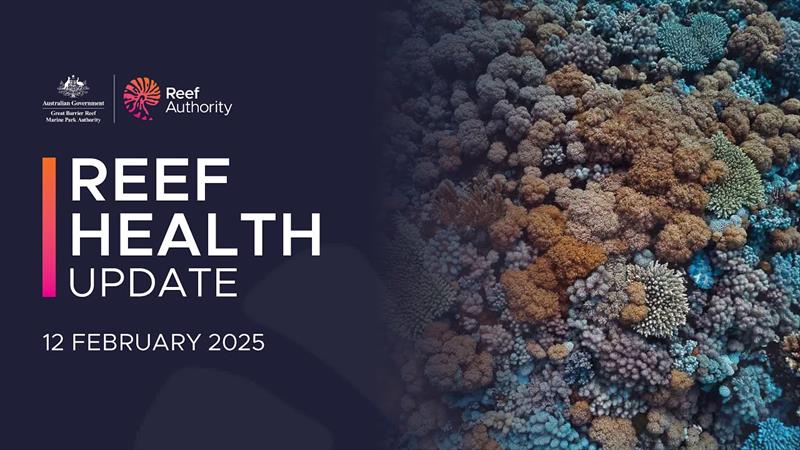
Great Barrier Reef health update
by Great Barrier Reef Marine Park Authority 13 Feb 00:21 UTC

Reef Health update | 12 February 2025 © Great Barrier Reef Marine Park Authority
As the lead managers of the Great Barrier Reef, the Reef Authority keeps an eye on the Reef year-round — with efforts stepped up over summer, a typically high-risk period from extreme weather.
The Reef Authority releases updates on the health of Reef which includes; sea surface temperatures, rainfall and floods, cyclones, crown-of-thorns starfish outbreaks, and coral disease.
These updates are based on forecasts, water temperature heat mapping, in-water surveys, citizen science and aerial surveys.
Reef Health update | 12 February 2025
North Queensland continued to be inundated by heavy rainfall over the past week, with many local communities already recording their highest monthly rainfall for February. Rainfall has seen many rivers reach major flood levels.
The increased wind and cloud cover from this low-pressure weather system have cooled temperatures across most of the Marine Park.
The impacts of this weather event on the Marine Park are still being assessed, including any changes to the Reef's water quality through floodwaters and freshwater intrusions.
Temperatures
Forecasts indicate sea surface temperatures will remain 0.5-to-1-degree Celsius above average for most of the Marine Park, with higher temperatures expected in the Far Northern region.
Rainfall
Very significant rainfalls have occurred over the catchment over the past week due to the monsoon trough across north Queensland.
Above average rainfall is likely to continue across the north over the next three months.
Reef health
Over the past fortnight, 154 Reef Health Impact Surveys (RHIS) were conducted across 20 reefs in the Marine Park. These surveys provide a detailed snapshot of reef health, including a breakdown of habitat and impact assessment.
Reefs surveyed in the Northern Region, the Cairns-Cooktown area, showed 1-10 per cent bleaching prevalence, while those in other regions were less affected by heat stress. No data was available for reefs above Cooktown in the Far Northern Region.
The Marine Monitoring Program is out sampling sites in the Mackay-Whitsundays, Burdekin, and Wet Tropics areas following the heavy rainfall over the past few weeks.
Aerial imagery including recent drone footage collected by the Crown-of-thorns starfish control program is being used to assess flood plume extent.
Crown-of-thorns starfish outbreaks are present in the Southern Region (Swain Reefs) and the Northern 'initiation zone' (Port Douglas to Lizard Island), with isolated outbreaks near Townsville and Whitsundays.
The Crown-of-thorns Starfish Control Program is prioritising reducing spawning populations in the "initiation zone" to prevent further spread of this coral-eating species, with concern the increasing population in this area may trigger waves of secondary outbreaks.
Reef management
As the lead managers of the Reef, we are working closely with our partners to monitor conditions across the Marine Park during these high-risk summer months.
We also use a range of management actions to support and build Reef resilience, including enforcing compliance with our zoning plan and ensuring people enjoy the Reef in a responsible way.
You too can help by reporting any incidents through the Eye on the Reef app, which is available for download on Google Play or Apple Store.